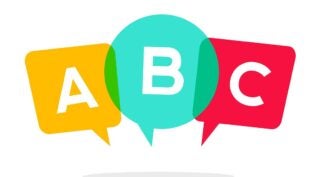
Philip Soriano has trouble fitting into dress shirts. This, along with his fashion and business experience, informs his role as co-founder of Hugh & Crye, a menswear company.
For the dreamers, starting a small business might feel like stepping out into an open prairie. Endless room for growth, no bosses in sight, unexplored trails to blaze. There’s something romantic about being out on your own. Pull yourself up by your bootstraps. A nice thought, except that it’s impossible. Taken literally, the idiom means to lift your entire body by the straps of your boots—in other words, to levitate. If you’re still reading, prepare yourself for some hard (and helpful) truths. They come courtesy of our featured small business owner, Philip Soriano, co-founder of Hugh & Crye, a menswear company based in Washington D.C. When Soriano helped launch the business seven years ago, he stared down a real, unsentimental challenge: How do you make a small business work when you don’t have the cash?
Keep your day job. With all the uncertainties that come with starting a small business, it could pay to be keep a sure thing around, at least in the development stages. Before Hugh & Crye’s founder, Pranav Vora, brought Soriano on board, Soriano made his living as an accountant for a non-profit. For one year, Soriano would leave his day job at 5 pm and turn his attention to Hugh & Crye, working intensely until midnight every night. When Vora went on sourcing trips to India, he’d hand the keys over to Soriano. “He’d say, ‘There you go. Take over the business.’” Yes, running a business was Soriano’s second job.
Don’t pay yourself. “It’s tough to talk about. I’m cringing just thinking about those times.” But it’s true: for one and a half years, Vora and Soriano worked the hours they did without keeping a cent for themselves. Everything went to the company. The dream.
Dream feasibly. Growing up in Germany with a sister who designed theater costumes and worked in fashion, Soriano had fostered in early interest in clothing. His taste leaned toward key pieces rather than trendy items, and modern twists on classic shirts. Only problem was, he and Vora could never find shirts that fit them. “At stores like Brooks Brothers or Jos. A. Bank, you only find small, medium, large. Why not have something else based on your own body?” At Hugh & Crye, customers choose from 12 sizes combining skinny, slim, athletic, broad with tall, average, and short. A simple sizing system, yet fresh. Soriano’s an optimist, but also a realist. He knew he had a product that satisfied a need in the market, so it was easier to make sacrifices to get his business off the ground.
Cover the bases. While Hugh & Crye was young and self-financed, the focus was on operations, customer experience, and inventory. There were no funds for marketing. No funds for other staff. (Soriano and Vora were the only two employees for the first two years.) “You quickly see whether you have a business that’s working and whether it’s profitable.”
Make customer service a way of life. Value customers as if they were your friends. “We don’t have call waiting. Three or more of us receive the office line to our cell phone. It can ring at 2 am and we’ll pick it up. We were out for drinks and someone stepped out to pick up a call.” Hugh & Crye now has a physical store in D.C., and Soriano takes shifts there, sometimes even hand-delivering shirts. “We have real conversations with people. Not ‘Let me know if you need anything,’ but ‘Hey, I’m Phil.’” Even in the early years, Soriano knew that Hugh & Crye could provide a great customer experience without breaking the bank. “It comes from a genuine interest in people.”
Be everywhere. These days you’ll still find Soriano speaking to customers over the phone and at the store during the holidays. He’s in the the warehouse, shipping out shirts. Negotiating with Huckberry to wholesale their product and partnering with American Express for Small Business Saturday—an initiative that got Hugh & Crye on TV during the Super Bowl and the Oscars. Meanwhile, Vora has also been abroad over 20 times, walking through factories, making connections and ensuring people are paid fairly and the working conditions are safe. Even as revenue has increased and business has grown—Hugh & Crye now has 10 employees, including marketing hires—Soriano doesn’t seem to let up. How can one guy be everywhere at once? you ask. Well, how do you lift yourself up by your own bootstraps?
Quickfire:
One book every entrepreneur should read:
Reinventing Organizations by Frederic Laloux.
One person from history you’d like to see in a Hugh & Crye shirt:
Albert Einstein.
Three favorite businesses in D.C.:












